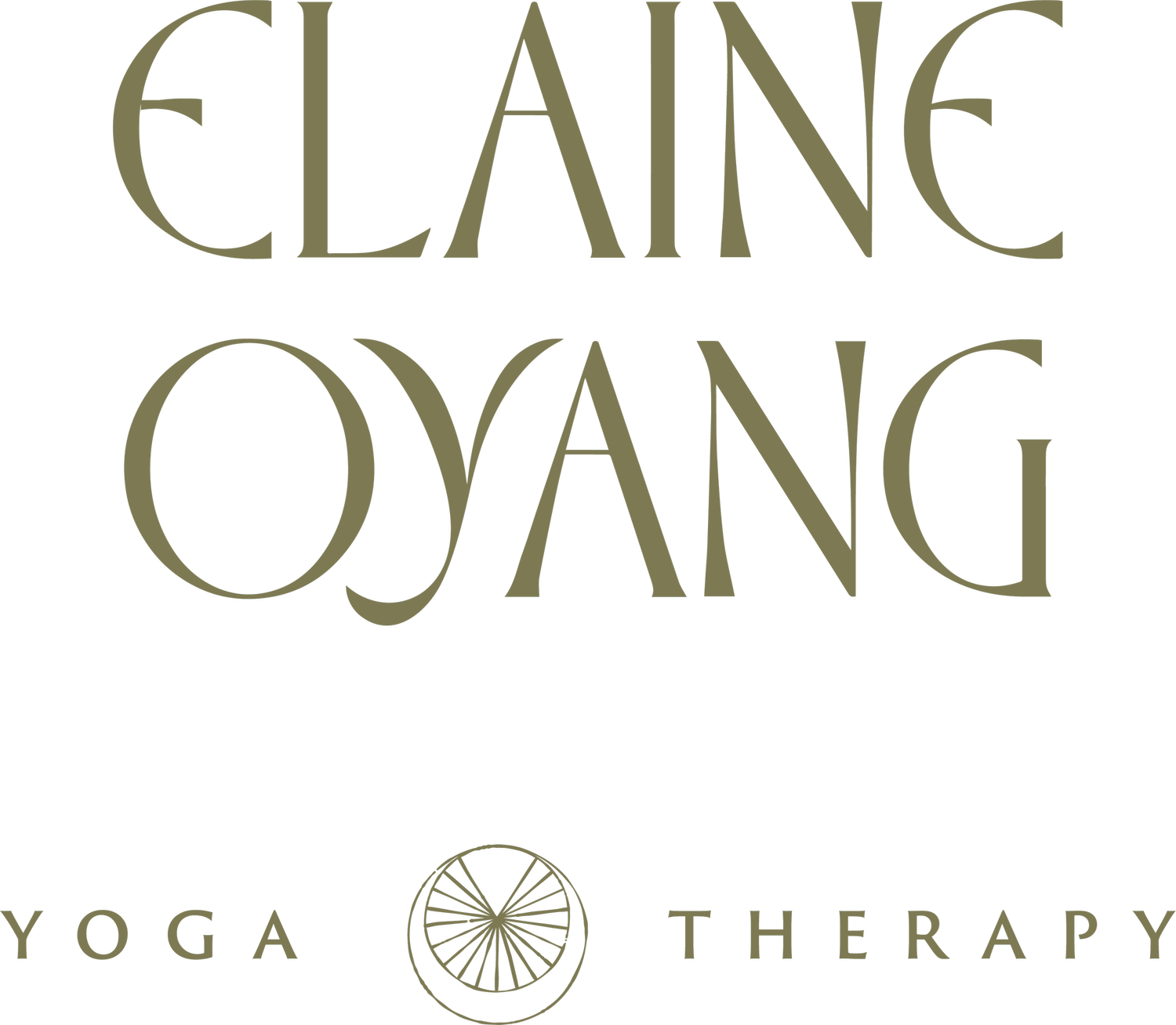
How to start exercise with chronic pain
While research in chronic pain and persistent pain is still in its infant stages, what we now know is that pain is not a good indication of tissue damage. We can experience pain, physical pain, in the absence of tissue or physical damage, hence many individuals can experience significant, life-altering pain despite the fact that their MRI and CT scans may show healthy tissues.

Couch Yoga (Part 3): Strengthen your legs and improve balance
Balance can be tricky and challenging if you have mobility issues, fatigue, chronic pain or chronic illness.
The following 9 minute practice is a low-barrier and accessible approach to to help you get comfortable and confident in getting to a standing position from a sitting position. You will also awaken your feet and ankle muscles to better overall balance and support.
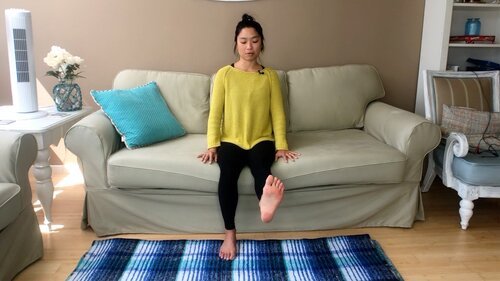
Couch Yoga (Part 2): 8-Minute Practice to Improve Balance and Strengthen Legs
Balance can be tricky and challenging if you have mobility issues, fatigue, chronic pain or chronic illness.
The following 10 minute practice is a low-barrier and accessible approach to help you awaken the muscles in your feet, legs, and hips so that you feel supported when you stand.

Couch Yoga (Part 1): Improve balance and strengthen your legs
Balance can be tricky and challenging if you have mobility issues, fatigue, chronic pain or chronic illness.
The following 10 minute practice is a low-barrier and accessible approach to help you start to increase your mobility through your legs and feet again.

How to safely exercise for chronic pain (without suffering later)
There are 4 key questions to inquire and be curious about when participating in a movement and/or exercise.
Am I/ Is this safe?
Will I be okay later?
Can I calm my breath?
Can I reduce my body tension?
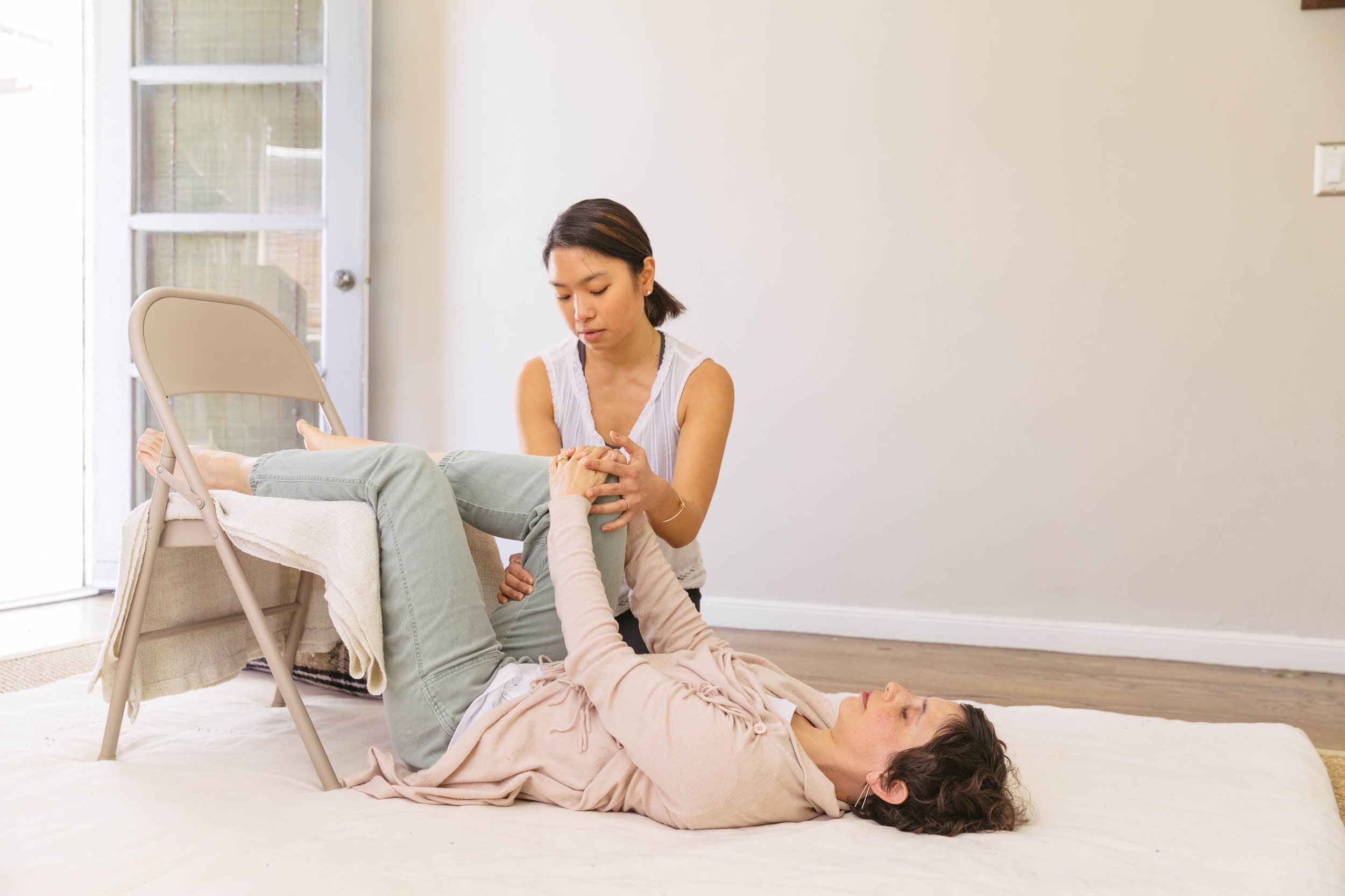
How to practice yoga with chronic pain (without suffering with consequences later)
Unfortunately, this is the experience of many of my clients and students. They were recommended to attend yoga classes to help with muscle stiffness, joint aches, chronic fatigue, and overall chronic pain, only to be severely disappointed and mildly traumatized by their experiences.
Modernized yoga in the West is rarely friendly to those with specific medical conditions, and most often caters to generally able-bodied and relatively healthy individuals.
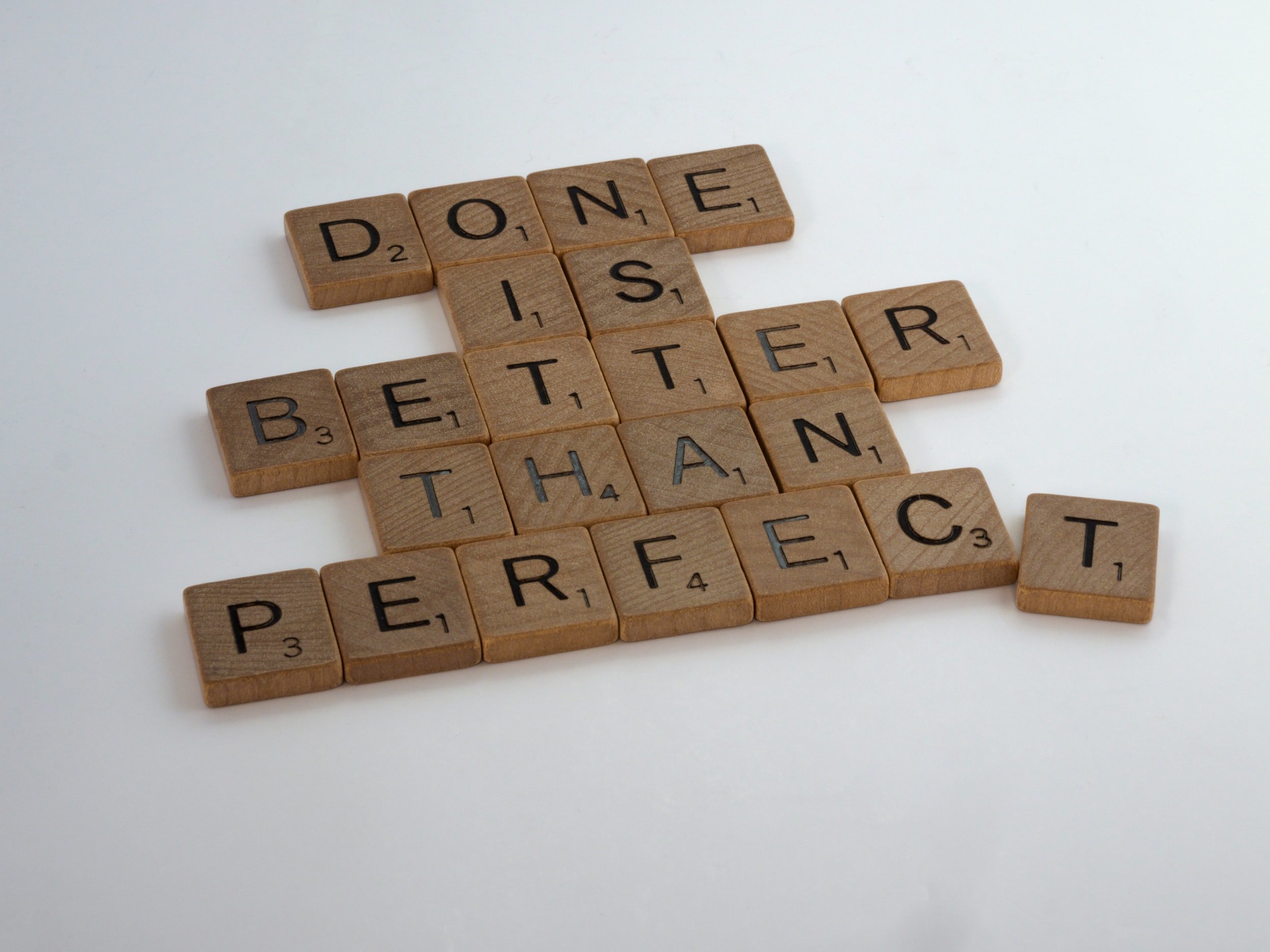
How perfectionism impacts chronic pain
t’s known that pain severity and negative outcomes are heightened amongst individuals with socially-prescribed and self-oriented perfectionism. (1, 2, 3)
While the precise mechanism is not yet known, we can postulate that perfectionistic individuals hold higher standards for themselves and set unrealistic expectation for themselves and others, both of which can create excessive stress.
The internalized stress excites the already triggered nervous system in chronic pain, which can further exacerbate symptoms.
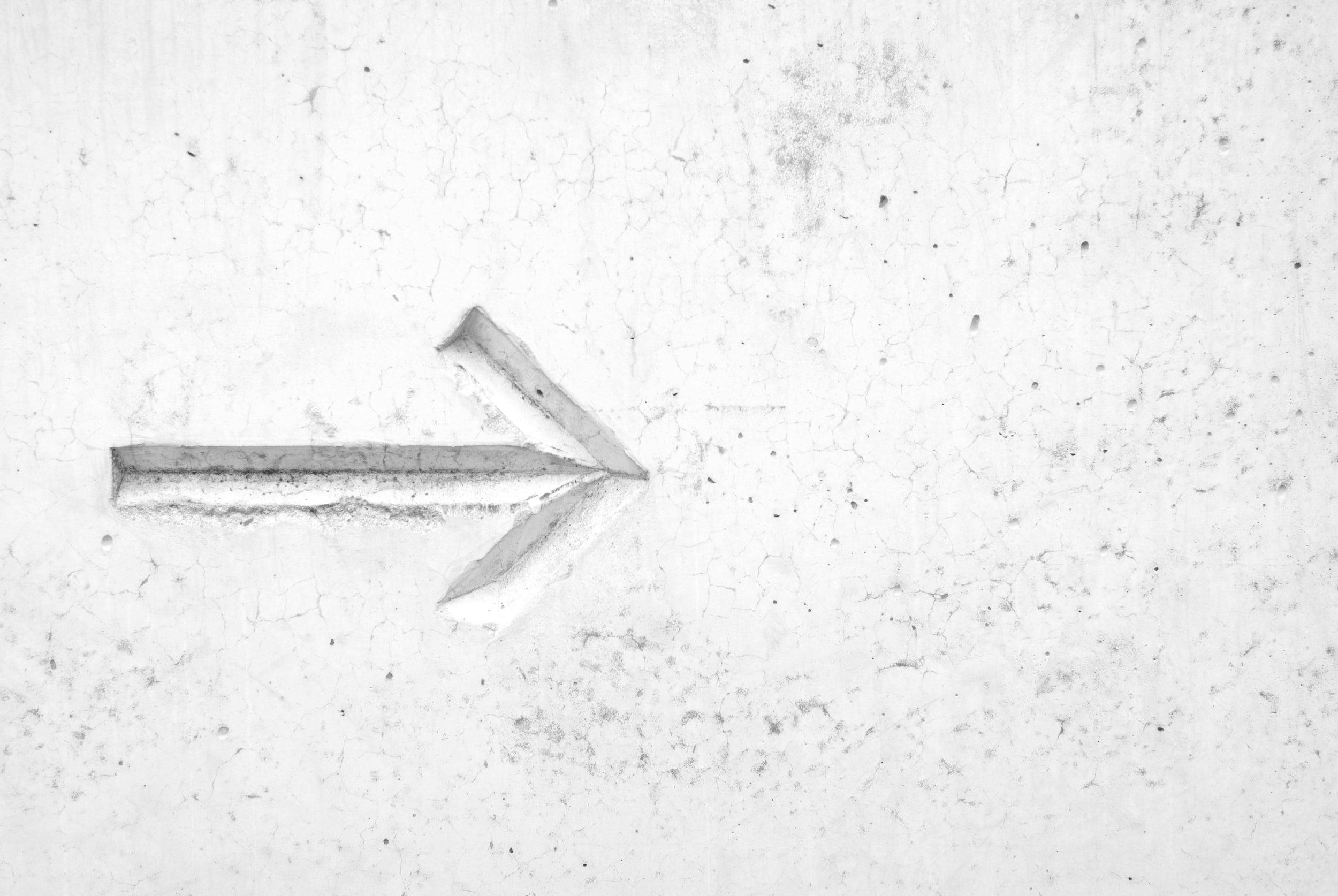
Five key factor that impact chronic pain
Pain is not always an indication of physical damage
Oftentimes, we think of pain as an indication of physical damage in the tissue. But the more we learn about the pain experience in the human body in the past decade, the more we realize that how we feel pain is actually multi-faceted.
There are multiple triggers in your internal and external environment that can create pain sensations. These alarms include, but are not limited to:
Mental wellness
Emotional health
Stress
Associated memories and trauma
Diet
Sleep
Physical activity or inactivity
Hormonal health
All of these alarm systems listed can be used as either fuel to the already burning fire, which in this case, is the persistent pain, flaming it to become bigger and more uncontrollable.. But all of them can also be used for calming the raging, uncontrolled fire.

Slow and gentle yoga for chronic pain
Perhaps you took a class or a handful. Perhaps you didn’t like the teacher, the studio, or the class itself, so you swear off from yoga.
But that is silly, because that is like trying a brand of chocolate one time, and deciding that you don’t like chocolate and you’ll never eat chocolate again.
Usually, we will try different brands of the same thing to find something we really like.
That’s the same as yoga for chronic pain. You will need to find the right teacher, the right environment, and the right style of yoga.

Using Guided Relaxation Practices to Manage Pain Flare-ups
For Brittany, the practice of yoga nidra helps calm her agitated nervous system in the midst of a flare-up. It might not always mean that the flare is resolved completely, but it does reduce in intensity to a manageable level.

How stretching your spine helps reduce pain
These simple acts of spinal stretching not only help keep the spine limber (which, by the way, is very important as one ages), but research shows that it also helps regulate the adrenal cortex (read, manages your energy). This energy management is super important for chronic pain because a sense of depletion and exhaustion can affect mood, mood can affect stress, stress can affect pain.

Daily Pain Care Plan: Things that challenge you
It may sound counterintuitive to incorporate things that “challenge” you in a Pain Care plan. After all, just waking up and showering may already feel like an enormous task that leaves you quite exhausted.
However, it is very easy to slip into the habit of withdrawing from all social or physical activities due to the fear of pain. Without some appropriate “challenges” that help keep you anchored in who you are, your inherent strength, and your social circles, you may start to lose yourself. Part of your Pain Care plan is to make sure that you are still participating in activities -- albeit in adjusted manners, frequencies, and intensities -- that continue to bring you joy, connection, and a sense of self-esteem and accomplishment.

Daily Pain Care Plan: Things that calm you down
Our physiology and nervous system are often shifted when we have persistent pain or chronic illness. Our systems become more sensitized, our buffer for feeling pain is decreased, and any sensation we feel is heightened. Therefore, something seemingly as innocent as being gently poked can feel like a stabbing pain.
Pain is a signal from our body to change our current behavior in order to prevent damage and harm to ourselves and our body. In persistent pain, our physiology changes so that our nervous system is on high alert for anything and everything.
A large part of pain management is to learn how to calm the nervous system down, to shift it from a perpetual state of fight-or-flight (stress response) to rest-and-digest (relaxation response).

Daily Pain Care Plan: Taking breaks to manage pain and energy
For one reason or another, it is usually exceptionally hard for us to take breaks. We often think: Well, let me just finish this one more thing, then I will take a break. Or: There is just so much to do -- I can’t afford to take breaks!
However, taking frequent breaks throughout the day will not only help you reduce chances of flare-ups and fatigue, it can also give your system an entire reset or reboot so that the tasks you need to accomplish are achieved with more ease, more effectiveness, and less stress.
You may have even noticed this in yourself. On days you’ve had little rest at night or during the day, you may feel more stressed out, overwhelmed, and anxious, all of which can result in fatigue and pain flares. By not allowing yourself to rest, you are ultimately dishonoring your own needs and your body.
We all need to rest. All in all, rest, even in 5 or 10 minute increments, can be incredibly constructive for yourself, your day, and for those around you.

Daily Pain Care Plan: What is it and how it helps with pain management
Persistent pain can derail us very quickly from our jobs, our social activities, our hobbies, and even from our own identities. It can leave us feeling lost, hopeless, and helpless.
The purpose of a Daily Pain Care Plan is to help set up some structures and routines that support our bodies in pain management. There are 3 essential components that go into a Daily Pain Care Plan:
Taking breaks - Schedule frequent breaks throughout the day so that we don’t overexert ourselves and “pay for it later”
Things that calm us down - incorporating things (activities, scents, sounds, sight, etc) that calm us down is essential in reducing the agitation in our nervous system that sends heightened pain signals
Things that challenge us - it can be easy to not want to do anything for fear of pain, but the fear itself can exacerbate the symptoms of persistent pain. Challenging ourselves just at the edge of our comfort zone without overexerting can ultimately help us increase our threshold and resilience.
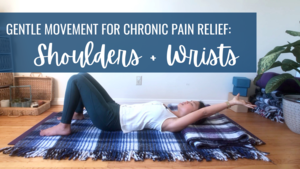
Gentle Movement for Chronic Pain Relief: Shoulders + Wrists
Movement and exercise for chronic pain is tricky. Move too little, and we may feel trapped in the fear and limitations of our chronic pain. Move too much, and we may risk further irritating the nervous system, causing more flares and inflammation.
So, what’s a person to do?
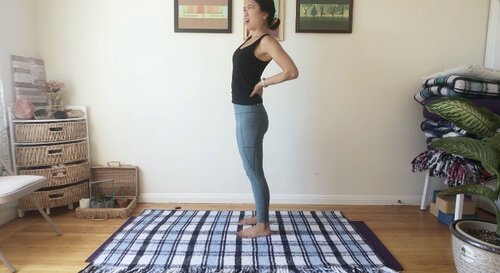
Does your back hurt when you lean backwards or reach upwards? Try these 4 poses for relief!
If you feel a gripping, seizing, and/or aching sensation in your lower back after prolonged periods of standing, when you try to lean backwards, or reach up to grab something, then you might find these 4 yoga poses helpful in relieving mild tension.
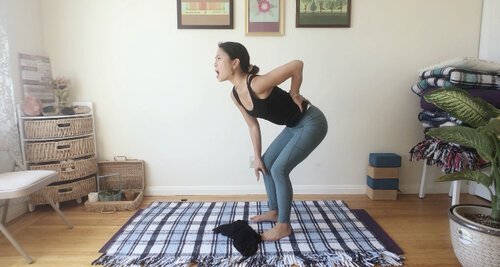
Does your back hurt when you bend forward? Try these 4 poses for relief!
You know your back pain is interfering with your life when you can’t even pick up something from the floor or tie your shoe lace without fear of your back seizing up (or perhaps it’s happened already before!).
Read on and watch this short video to learn these 4 yoga techniques for managing mild lower back pain that is aggravated when you bend forward.

A simple breathing practice to manage chronic fatigue
Chronic fatigue can make it virtually impossible to get out of bed on most days. This breathing practice can help alleviate some of the "got-thrown-under-the-bus-then-trampled-by-a-stampede" feeling. Do this in bed, seated, or anywhere that feels comfortable.

Manage chronic fatigue with these gentle, non-draining movements
When you’re under the 5-ton weight of chronic fatigue, the last thing that you want to do is to move your body. However, you intuitively know that some gentle, easy movements might help resolve the stiffness and stagnation you feel from being in reclined positions for so long. But, where and how to start?

